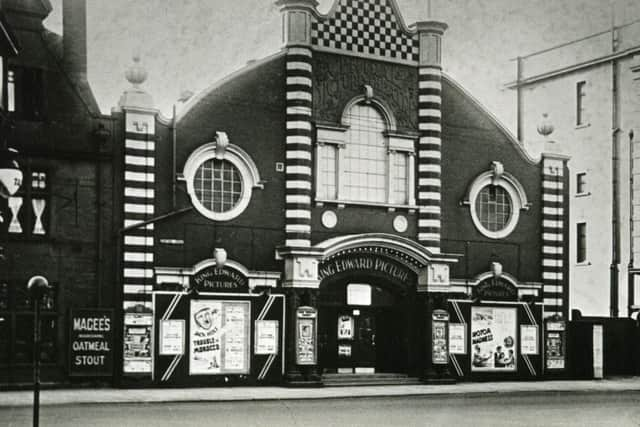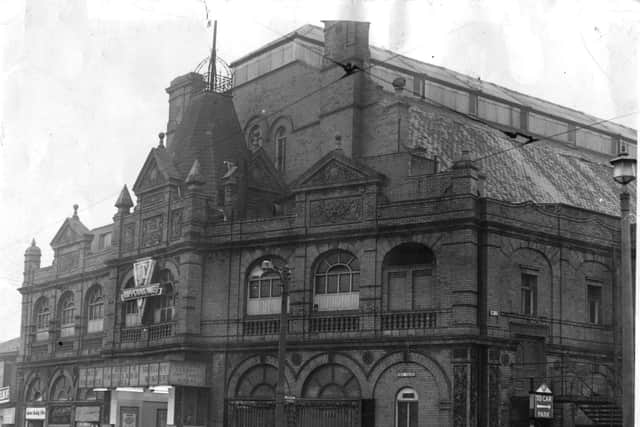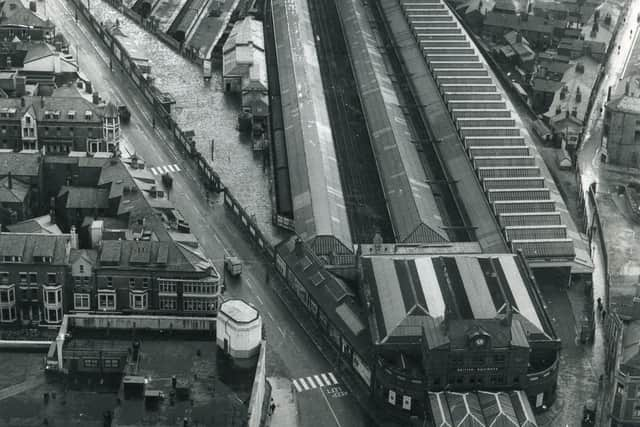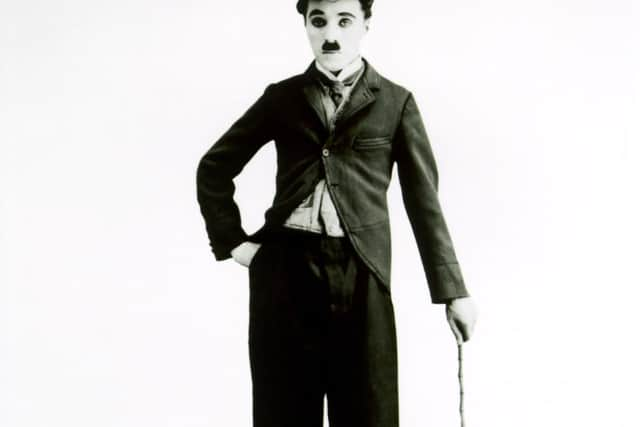The Blackpool picture house that had everyone talking
and live on Freeview channel 276
Great things have been promised for the site of the old Central Station – hotels and restaurants, and Chariots of the Gods, a ‘flying theatre’ said to offer ‘an immersive and thrilling Edutainment experience unlike any other in the world.’
When the plans were first announced, council leader Simon Blackburn hailed them as a game-changer that would make Blackpool a world class tourist destination.
Advertisement
Hide AdAdvertisement
Hide AdThat seems to be the way with this site. We have already been promised the Snowdome, of course, and before that the super-casino, neither of which got off the ground. But a century before all that, it was a picture house that got everyone talking.


When the King Edward Cinema opened in July 1913, it was known as the Central Picture Theatre – a name that can still be seen picked out in cream terracotta on the great curved gable which rears up from Central Drive at the junction with Read’s Avenue. This was during the early days of silent cinema, and right from the start, the King Edward was billing itself as ‘the finest picture palace in Blackpool’.
The building’s façade would be preserved under the present plans, and possibly incorporated into an ‘artisan food hall’ on the south-east approach to the site. And that’s a relief, for with its Accrington brick and stone-coloured banding, its large Venetian window, its pilasters and checker-board pediment, the King Edward really is something special. Inside, there was a barrel-vaulted ceiling and plasterwork in the shape of leaves and flowers, although much of that is thought to have been destroyed when the building was converted into a restaurant in the 1980s.
The management of the King Edward was never backwards in coming forwards. Early advertisements describe it as the ‘prettiest and cosiest new theatre in Blackpool’. They also promise ‘1,000 tip-up seats’ alongside ‘all the latest and up-to-date films’ and ‘popular prices’.
Advertisement
Hide AdAdvertisement
Hide AdBut if this was one of the first purpose-built cinemas in Blackpool, it didn’t lack for competition. Films had been shown in the town for the last two decades, and there were already established halls such as the Colosseum on Tyldesley Road and the Royal Pavilion on Rigby Road, the Hippodrome on Church Street (which would become the ABC), the Tivoli in Talbot Square, the Princess on the Promenade and, across from the present-day Marks & Spencer store, the Clifton Palace. There were also cinemas in the Winter Gardens and on the Victoria (later South) Pier. Only a week later, the Imperial Picture Theatre would open up on Dickson Road. And while prices at the King Edward might have been popular, that didn’t stop them increasing. It was 3d or 6d for the stalls at first, 6d for the balcony. But the cheapest ticket would be fourpence before long, fivepence in no time at all. And anyone wanting to come in ‘early doors’ would have to pay even more.


There were showings in the evening and most afternoons, together with a special ‘sacred’ bill on Sundays. On those rare occasions when the weather was wet, there might even be a showing at 10.30 in the morning. And whatever the time of day, patrons were promised a ‘Great programme of all-star films’, with changes on Mondays and Thursdays.
The main film in the first few days showed the recent visit to Blackpool of King George V and Queen Mary, and the weeks which followed were packed with melodrama and thrills – Trial By Fire and On Fortune’s Wheel, Prisoner of the Harem and The Jockey of Death. The most popular performers at the King Edward were Mary Pickford and Charlie Chaplin, but Norma Talmadge and Pauline Frederick could also be seen, Violet Hopson and Douglas Fairbanks, John Barrymore and Stewart Rome. There was even a film starring Miss Cecilia Loftus, who, a newspaper noted, ‘is so well known to Blackpool residents, having been educated at Layton Convent.’ Before long, though, ‘Cissie’ would be fleeing the country for good, dogged by ill-health, ugly rumour, and a criminal conviction for the possession of morphine.
The King Edward would prove itself a place of innovation. Special continuous performances were introduced, which patrons were promised would last for at least 2½ hours. There were twice-nightly showings, with different films in either house. A ‘King Edward Orchestra’ was formed. And the place even published its own magazine, printed on pages of blue, bound between covers of black and orange.
Advertisement
Hide AdAdvertisement
Hide AdOn the day the Great War broke out, those inside the King Edward were watching In the Wolves’ Fangs. But in a place named for a monarch, the conflict couldn’t help but loom large. Most war films would be shown there, including The Battle of the Somme in October 1916, and man known as ‘Ex-Gunner 537’ would treat audiences to his Battlefield Pictures, a collection of lantern slides as well as films, which promised ‘Living Incidents of the Great European War. Pictures that will make you think.’ Later, a benefit concert was given in the presence of the Mayor and Mayoress, Alderman and Mrs Lindsay Parkinson, culminating in a stirring address from none other than Harry Lauder. (It was two shillings in the balcony for that one.) Benefit concerts were common at the King Edward. One held in aid of Victoria Hospital featured a Beethoven sonata and Mr Tom Kimberley reciting The Death of Nelson. There was ‘a capital rendering’ of Our Sailor King by Miss Ethel Reeve, who was known as ‘The Singing Nurse’. And the Blackpool Orpheus Ladies’ Choir and the Blackpool Male Voice Choir joined forces for Comrades in Arms and the Soldier’s Farewell.


As fighting still raged on the Somme, a party of staff from the King Edward made an excursion to Ingleton, where, in very unseasonable weather, they enjoyed a six-course dinner, before returning home via Garstang (where they enjoyed a six-course tea). The party was augmented by staff from the Waterloo Picture House on Waterloo Road. The King Edward was managed jointly with the Waterloo, which it slightly resembled, and advertisements of the time call the two of them ‘The People’s Popular Picture Houses’ and ‘The Cinemas of Distinction’.
But if the halls were treated alike, the same couldn’t always be said for their respective patrons. When ‘the eminent soprano’ Miss Lilian Beaumont was engaged to perform at the King Edward, she was withheld from patrons of the Waterloo, who were shown Adventures Among the Cannibals instead.
Eventually, a benefit even had to be held for one of the cinema’s own. John Taylor Jones had been the assistant manager, before he joined up and was sent to France. And lately, he had been wounded on the Western Front. This concert, too, featured songs, recitals and speeches, and in the interval, Mr Jones was helped up onto the stage to receive the acclaim of the packed audience.
Advertisement
Hide AdAdvertisement
Hide AdBy now, the manager of the King Edward was John Beck, who lived near Devonshire Square, and whose early tenure had been marked by a very special event. On 14 April 1917, Mr Beck married his sweetheart, Annie Singleton (née Taylor) who lived in Lune Grove. The wedding took place at St Paul’s church in Marton, and the bride wore a wine-coloured dress coat with ‘picture hat’ to match, and carried a spray of roses and lilies of the valley. Mr Jones was a guest at the ceremony, where the best man was the assistant manager of the Waterloo Picture House. And after returning from honeymoon in Colwyn Bay, Mr Beck lost no time in assuring his patrons that, contrary to rumours that had been sweeping the Fylde, and indeed the country, Mary Pickford was not dead. Ms Pickford would go on making films for years, and the King Edward would show many of them. John Jones eventually succeeded Mr Beck as manager. But after the Second World War, as the competition grew even more intense, the cinema turned to ‘second-run’ films, and to ‘B’ films shown with comedies from an earlier age – Veronica Lake and Alan Ladd alongside Old Mother Riley and the Crazy Gang.


The King Edward closed its doors in the Seventies, to be succeeded by a bingo hall, by that restaurant – The Village – and finally by a succession of nightclubs and bars. David Hewitt is a lawyer and a writer. His last book – Joseph, 1917 – told the true story of a Thornton man who got caught up in the Great War. His next one – Anything But Silent – is about another early film, which scandalised half of Lancashire.